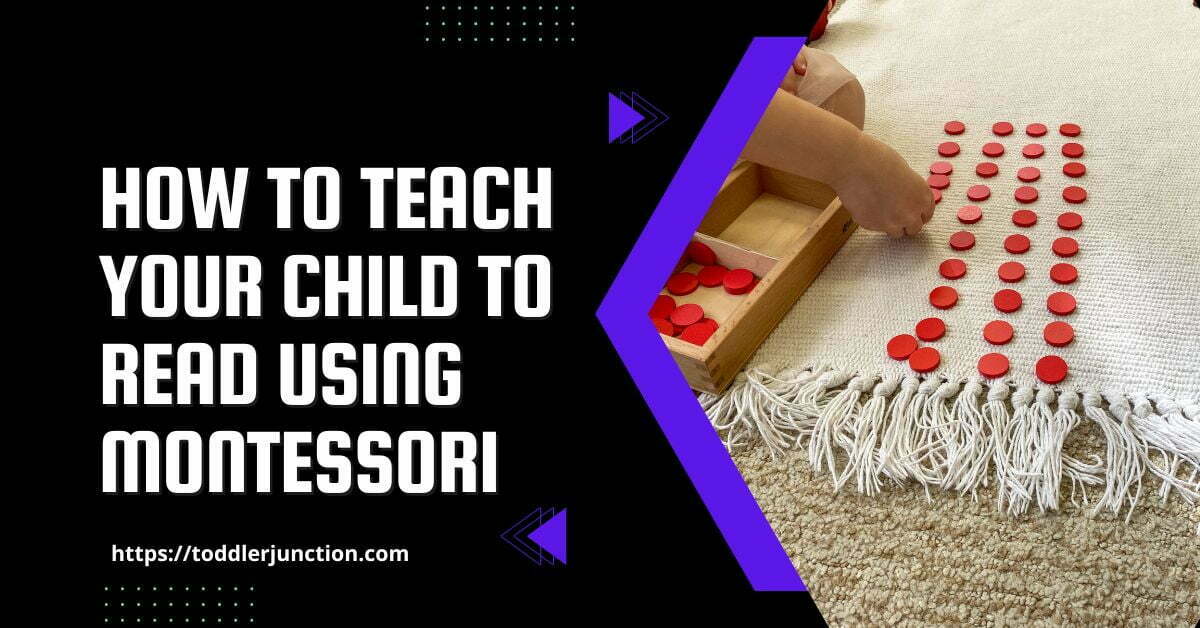Montessori is a great way to teach your child to read. It emphasizes hands-on learning and independence. Montessori is also a great way to prepare your child for the real world. Let’s talk about how you can teach your child to read using Montessori.
The Reading Process
Most Montessori schools use a three-part reading process that begins with learning the letters of the alphabet and their sounds, blending those sounds together to form words, and reading sentences and stories. This process is often referred to as the “language development sequence.”

The first step in teaching your child to read using Montessori is introducing them to the alphabet’s letters and their corresponding sounds. This can be done using various Montessori materials, including alphabet cards, wooden blocks, or even letter stamps. Once your child is familiar with the letters and their sounds, you can begin to work on blending those sounds together to form words.
This is typically done using a Montessori moveable alphabet, which consists of a set of letter tiles that can be rearranged to spell out different words. As your child becomes more confident in their ability to blend sounds together, you can start working on reading sentences and stories. There are a number of Montessori materials that can be used for this purpose, including storyboards, picture cards, and storybooks.
Montessori: The Three Period Lesson – Getting it Right!
The Montessori Reading Materials
The Montessori reading materials are designed to help your child learn how to read using a hands-on, interactive approach. The materials are divided into three main categories:
- the alphabet
- phonics
- reading comprehension
The alphabet materials help your child learn the names and shapes of the letters of the alphabet. The phonics materials help your child learn the sounds that the letters make, and the reading comprehension materials help your child understand what they are reading. Some examples of reading Montessori materials that can help your kid are mentioned below.
- Sequence Stories
- Creative Writing Story Starters
- Cut Up Sentences Reading Activity
- Matching Sentences with Photographs
- Silly or Sensible Sentences Sorting Cards
The Montessori reading materials are designed to be used in a three-part lesson:
- The teacher presents the material.
- The child explores and manipulates the material.
- The teacher leads a short discussion about what the child has learned.
Each part of the lesson is vital in helping your child learn to read using the Montessori method.
The Montessori Method
The Montessori method of teaching reading is based on the belief that children are natural learners. With this method, children are exposed to a wide variety of books and materials and encouraged to explore at their own pace. This allows them to develop a love for reading and helps them build the skills they need to become successful readers.
One of the key aspects of the Montessori method is providing a print-rich environment. This means that plenty of books and other materials are available for children to explore. It also means that adults model reading behavior for children. Reading aloud to children is an essential part of this method, as it helps them to see how adults use reading in their everyday lives.
Another key aspect of the Montessori method is using phonics to teach children how to read. Phonics is a system of teaching reading that focuses on the relationship between letters and sounds. With phonics, children learn how to sound out words, and they also learn about the meaning of words. This helps them to develop strong reading skills and comprehension skills.
The Montessori method also emphasizes the importance of sequenced learning. This means that children learn new concepts in a step-by-step manner.
For example, they might first learn about letter sounds, and then they might move on to learning about blending those sounds together to make words.
By moving through concepts in a sequenced manner, children can build a strong foundation for future learning.
Reference:


